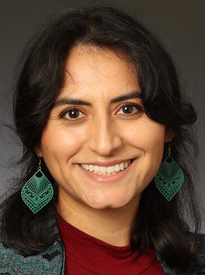When I was little, there was a tiny creek in our neighborhood. My sister and I would sometimes sneak away to toss rocks into the water, captivated by how big or small of a splash we could make.
What I enjoyed most, however, was watching the ripple effect of each rock. Even the smallest pebble, although tiny at first, created ripples that spread outward, touching every corner of the creek and generating waves of change.

Nataly Sorenson
In 2022, Classy’s Why America Gives report highlighted future giving trends among traditional donors (Gen X and Baby Boomers) and new-gen givers (Millennials and Gen Z). It noted that while “traditional donors have more money to give, they are maintaining consistent giving levels. In contrast, next-gen donors, who currently give less, are more likely to increase their donations and make sacrifices in their daily lives to free up funds for charitable giving.”
The Giving USA 2024: The Annual Report on Philanthropy for the Year 2023 revealed that despite rising inflation, giving grew by 1.9% in current dollars in 2023.
Many analysts are forecasting optimistic trends for 2024, despite the increased cost of living. As the executive director of a nonprofit, Gaston Christian Center, I interpret these reports as a positive sign for churches and the nonprofit sector. They show people still care about making the world a better place.
Last year, Gaston Christian Center lost two faithful givers — both women from the Baby Boomer generation. One was a widow, and the other never married. Despite coming from different socioeconomic backgrounds, both women made significant contributions: one through multiple large gifts, and the other through a $25 monthly gift for over five years. They both supported an organization that aligned with their Christian values and beliefs to meet community needs.
When I think about these women, I am reminded of the large rocks and tiny pebbles thrown into the water, leaving ripples long after they sank to the bottom of the creek.
As the giving season approaches, many of us will be planning our end-of-year contributions to nonprofits, churches, foundations and educational institutions that reflect our values and address the causes we care about — be they religion, education, human services, international affairs, the environment or the arts.
“I often wonder what impact my small contributions can truly have.”
As a Millennial at the start of my career, I sometimes feel discouraged that I cannot make a $25,000 or even a million-dollar gift to the organizations I support. I often wonder what impact my small contributions can truly have.
Yet, I am reminded of Mary Ruth, who faithfully donated $25 each month for more than five years. Although her gifts were modest, they accumulated over time and significantly contributed to the budget of Gaston Christian Center and the impact of our services. I also remember Dorothy, who lived below her means, a simple, nonflashy life, and was able to leave a major gift when she passed.
Both these women remind me of Luke 21:1-4 that teaches us the value of a gift lies not in its size, but in the heart and sacrifice behind it.
So, as you prepare for your end-of-year giving this season, remember the nonprofits, institutions and churches you support can do what they do, provide what they provide and serve those they serve because of the generous gifts from individuals like you. We could not make an impact without your help.
As this year wraps up and as you prepare your household budgets for 2025, I leave you with this: What ripple effect will you leave behind? What waves of change will you create?
Nataly Mora Sorenson is an ordained minister and licensed master social worker in the state of Texas who currently serves as executive director of the Gaston Christian Center, a nonprofit in Dallas whose mission is to partner with its donors to provide holistic support to our communities through a campus of nonprofits and churches guided by Christian principles of compassion, love and service.


